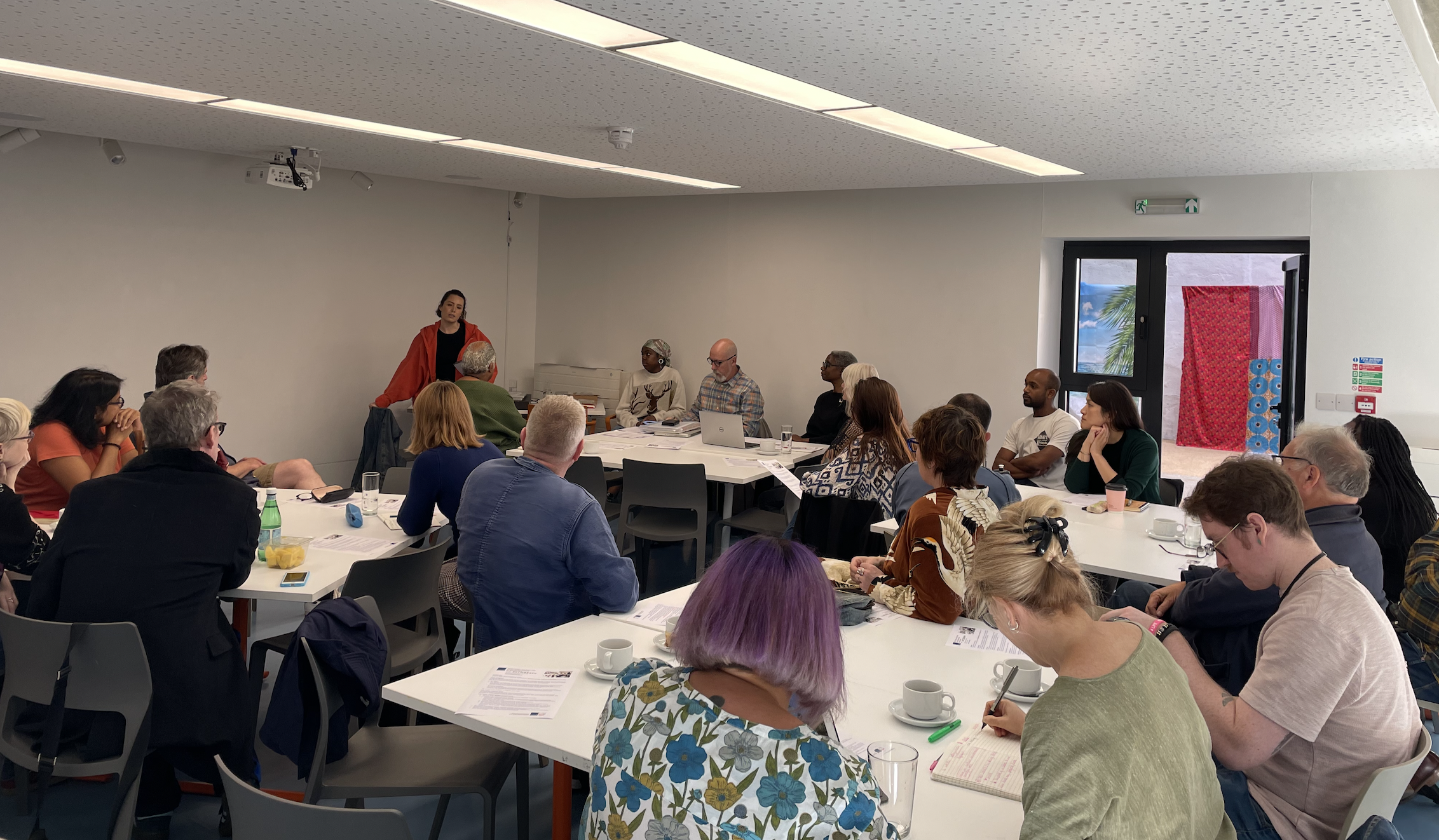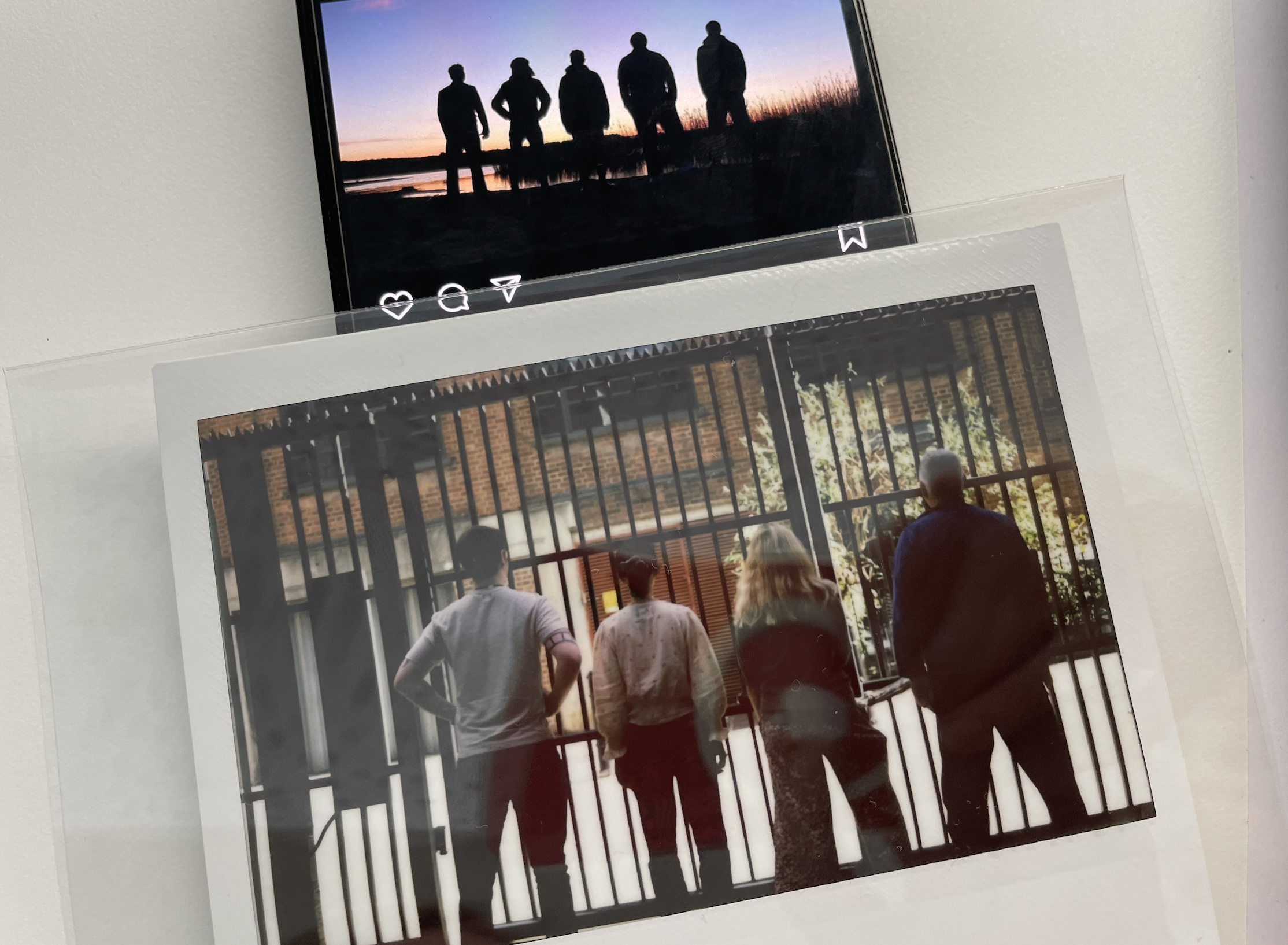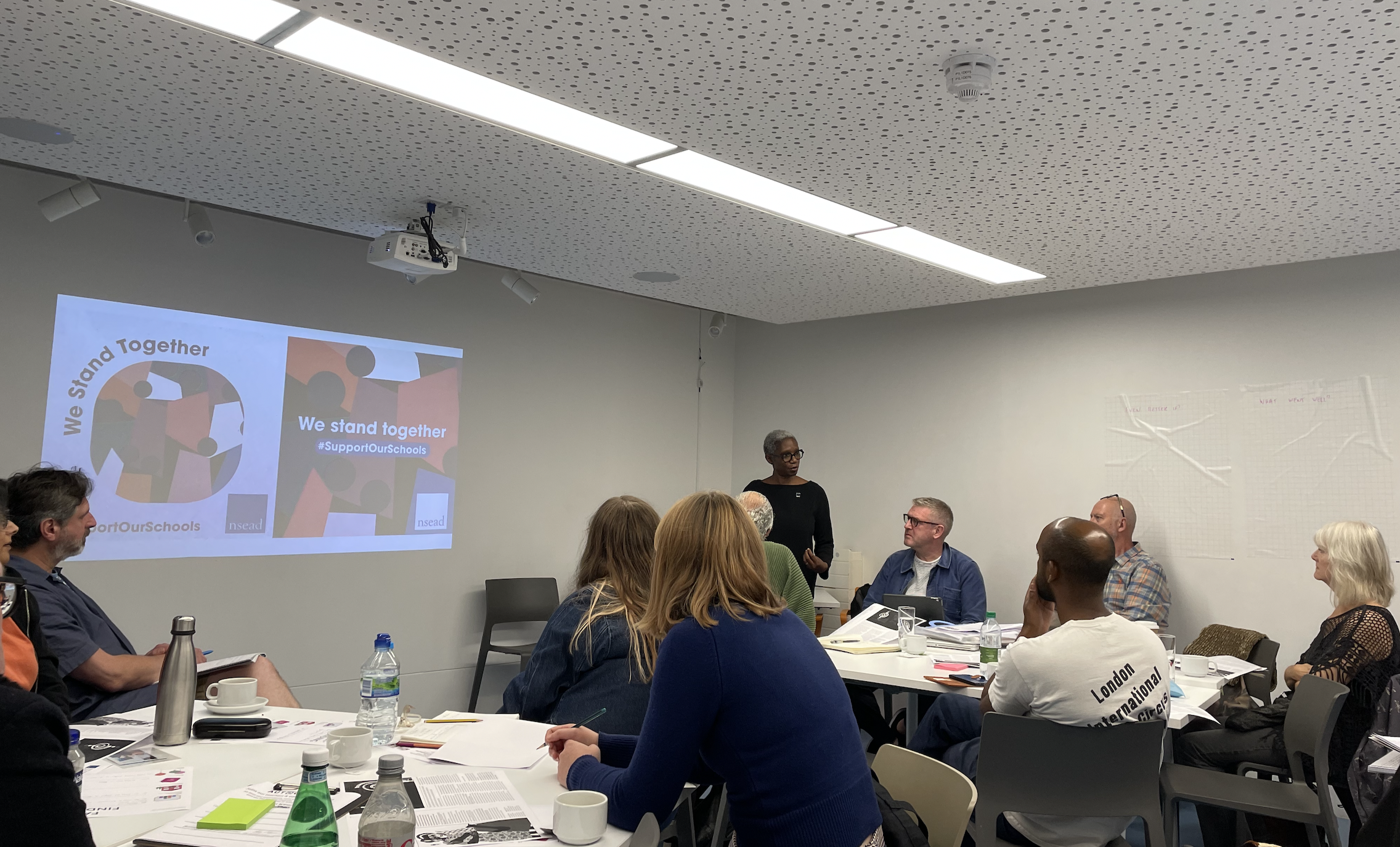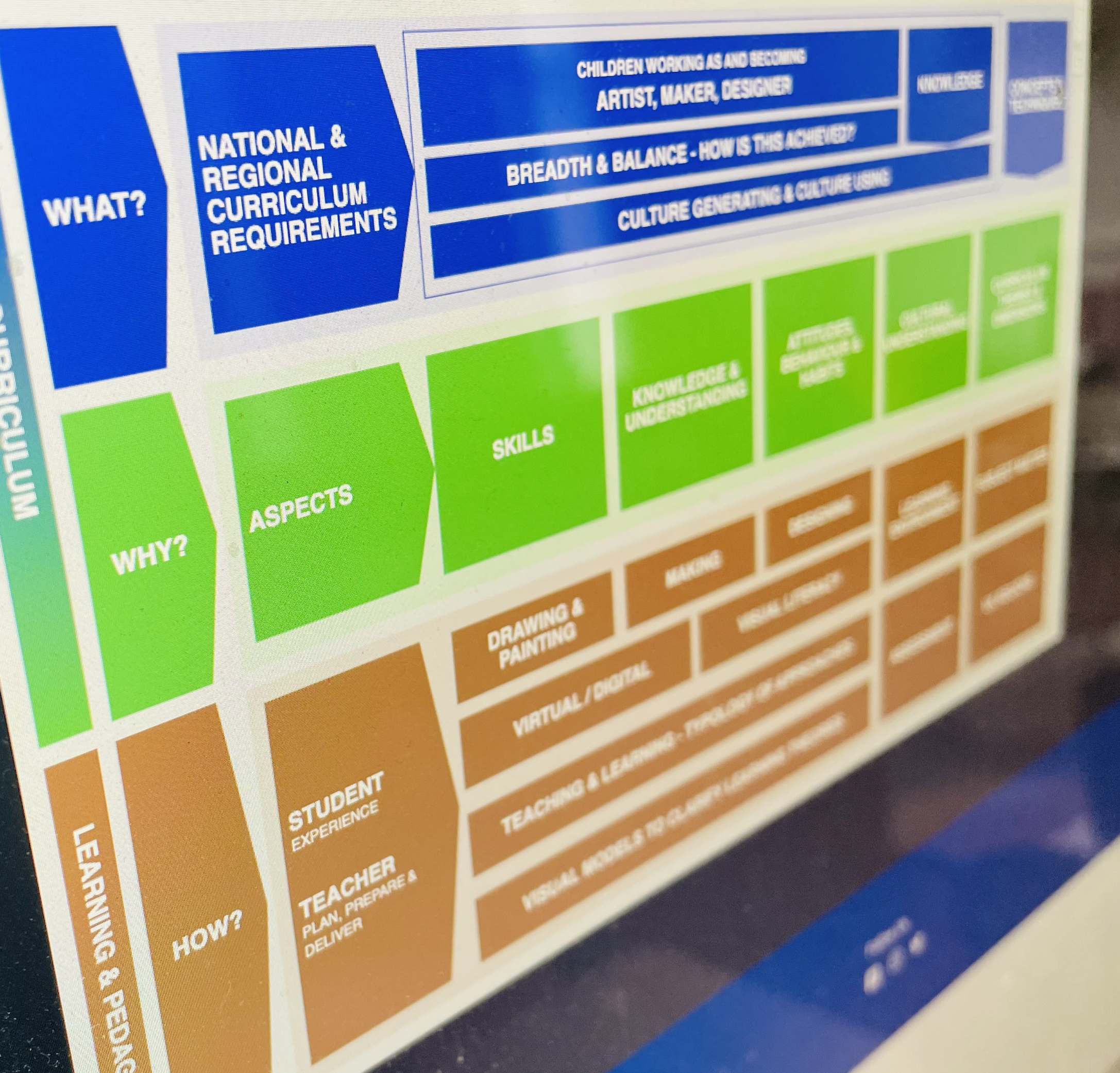Event Recap: SEAD visit Autograph, learn about the Visualise report, and explore the Big Landscape
Ged Gast, Andy Ash, chairs of SEAD and the Better Practice SIG; Marlene Wylie and Sophie Leach, members of the Special Interest Group for Better Practice, share the recent SEAD meeting, hosted by Autograph, on Saturday 23 September.
The NSEAD South East Art and Design (SEAD) group meet in London once a term in a museum, gallery, school or university setting. Members come from near and far – from the Isle of Wight to the University of Norwich. Group members come from primary, secondary, further and higher education; and initial teacher education. SEAD exchange good practice, and updates and debates on local and national issues concerning curriculum, teaching and learning, assessment and all areas of art, craft and design education.
Jolie Hockings, Engagement Curator: Schools and Young People, began the day and shared it was Autograph’s 35th birthday. As an arts charity, Autograph champion the work of artists who use photography and film to highlight representation, human rights and social justice. The group were invited to visit the amazing exhibitions: Armet Francis: Beyond the Black Triangle and Hélène Amouzou, Voyages. Find out more here.
The Autograph team introduced photography resources and the archive. Autograph’s resources diversify photography, photojournalism and family albums. The resources ask what constitutes photographic practice? Both the photographs and resources document different histories. They enable art activist workshops and discussion in a range of subjects. They offer creative approaches to ‘read’: history; colonialism; identity; citizenship and community – conversations between the past and the present.

Armet Francis: Beyond the Black Triangle, Preserving the Archive Workshop
About the exhibition:
‘For more than four decades, Armet Francis’ mission in photography has been to document the African diaspora. A Jamaican-British photographer with an acute understanding of black consciousness, his images are life-affirming moments that celebrate the resilience and survival of African diasporic cultures.‘ Autograph exhibition introduction.
Cassia Clarke, artist and archivist, and recent graduate from UAL, presented and ran the workshop titled: Preserving the Archive. Cassia began by giving the group her family’s photos and showing short videos which document her process and her family's engagement – they are memory, record and history. The group used archive gloves to touch the photos.
A workshop activity, which included sets of questions, led to discussions about photographs and their stories. They prompted discussions about how they feel as analogue images; what assumptions might be made by seeing them; that they give a criticality; their physicality also offered opportunity for connecting to the past and seeing a thread and a community grow. Cassia shared a film called: The first gallery I knew which everyone enjoyed.
Cassia and the group asked insightful questions:
- What is the importance of family albums and/or social media?
- What does 'family' mean to children in care or children and or children who are refugees and may. have travelled alone?
- What value do photos have today?
- What do photos offer for history, community, meaning, interpretation?
Further discussions across the room raised questions about the value of definition, and redefinition, making links between photos and developing real and imagined narratives.
Cassia’s workshop asked us to use our own collections of images (on our phones) and we were asked to select one image – that showed friendship; locality; family. Who, where, what… and remake the images in groups. Groups were all given fact-finding worksheets and labels. Questions included, ‘Why are some histories preserved more than others?’ Members said that they really enjoyed the session, it was really well researched and informative.

Visualise Project 2021-23
In the afternoon Marlene Wylie, NSEAD president, shared progress both with her presidency and with the Visualise Report.
The research project started in 2021, a partnership between Freelands Foundation and the Runnymede Trust. Its aim is to address racial equality in art and design education. Marlene described how the Autograph photography and resource pack, which is now over ten years old, was an important resource which embodied her lived experience.
Ten years ago, for the first time, she experienced seeing images of people in an art-related resource for schools – with an image that looked like her and her family. Marlene shared the expectation of young people today – Visualise needs to deliver: young people want adults to deliver on a curriculum that reflects them and their lived experience. Marlene shared that the report and recommendations will be published in a few months. When published, Marlene called for everyone to read it.
As president of NSEAD, Marlene shared the importance of the collective endeavours, of NSEAD as a network and of the writers and researchers, some of whom have become NSEAD members, and who have made considerable contributions to the report as artist researchers.

The Big Landscape for the art, craft and design curriculum discussion
Andy Ash, co-chair of the NSEAD Better Practice Special Interest Group (SIG), shared how Marlene had laid down the gauntlet for greater diversity, voice and representation in the curriculum, and in the pedagogies we use. This important challenge aligns to the Better Practice SIG’s aims.
Ged Gast, co-chair of the SIG, shared access to the Big Landscape website, with the proviso of unfinished navigation features. This was an opportunity to reconsider the Big Landscape poster (from AD magazine #37) and at the same time explore the website under development.
Sophie emphasised the questions, the ‘What, Why and How’, which now had additional sets of starter questions to begin your curriculum journey of review – The questions aligned to the Big Landscape's map, and to the 25 aide-memoire boxes.
Andy Ash and Ged Gast shared the NSEAD brief that this is an aide memoir – it is there to help you review or build a curriculum that aligns with your school or university values. It now has a glossary; it will in phase 3 also show exemplars; it will be developed over phases and have plenty of opportunity for member feedback as well as contribution and comment. Members worked independently and in pairs or small groups to navigate, explore, test out how intuitive the Big Landscape is to use, and to explore the content.
Participants were generous and thoughtful with their feedback. Michael Bradbury, Head of Art, said 'I like how it’s structured; It’s an amazing thing. It’s like a universe of art education'. One member said, 'The Big Landscape needs to be seen by policy makers; to encourage other ways of practice; learning and assessment.' Another member gave this feedback, 'Because of the care that’s been brought to it, it will certainly inform my own practice and department.'
Feedback will continue to play an integral role in the development of the Big Landscape, and we are grateful for the expertise and insight from every art educator who has shared their feedback, and to the Better Practice SIG, who have helped build the Big Landscape so far. Ged shared a hand out with further areas to consider when curriculum planning and developing your local curricula.
Andy concluded:
Don’t just review your curriculums, change it.
As the session closed the group explored AI as a possible session for later this term. Dan China, shared AI’s positive experiences which had been shared on his blog: danchina.co.uk The group agreed AI is both an opportunity and threat.
The date and venue of the next meeting will be shared soon. Schools, universities, museums and galleries are all great venues for the group. Autograph were thanked for hosting such a great day.
